Designing prosthetics for children is not just about engineering. It’s about understanding growth, movement, comfort, and most of all — change. Unlike adults, children are constantly growing. Their bodies evolve quickly, and with that, so do their prosthetic needs. At Robobionics, we believe that a prosthetic socket for a child is more than just a shell. It’s a second skin. One that must fit just right, allow freedom to play, adapt to change, and still offer the stability and function required to live an active, joyful life.
Fitting a child with a prosthetic is one of the most rewarding yet challenging things we do. Not because of technical limitations, but because children are dynamic. Their bodies, preferences, and abilities shift at a pace that keeps prosthetists and parents on their toes. The socket — the part that connects the limb to the prosthesis — plays the most crucial role. It’s where comfort meets control.
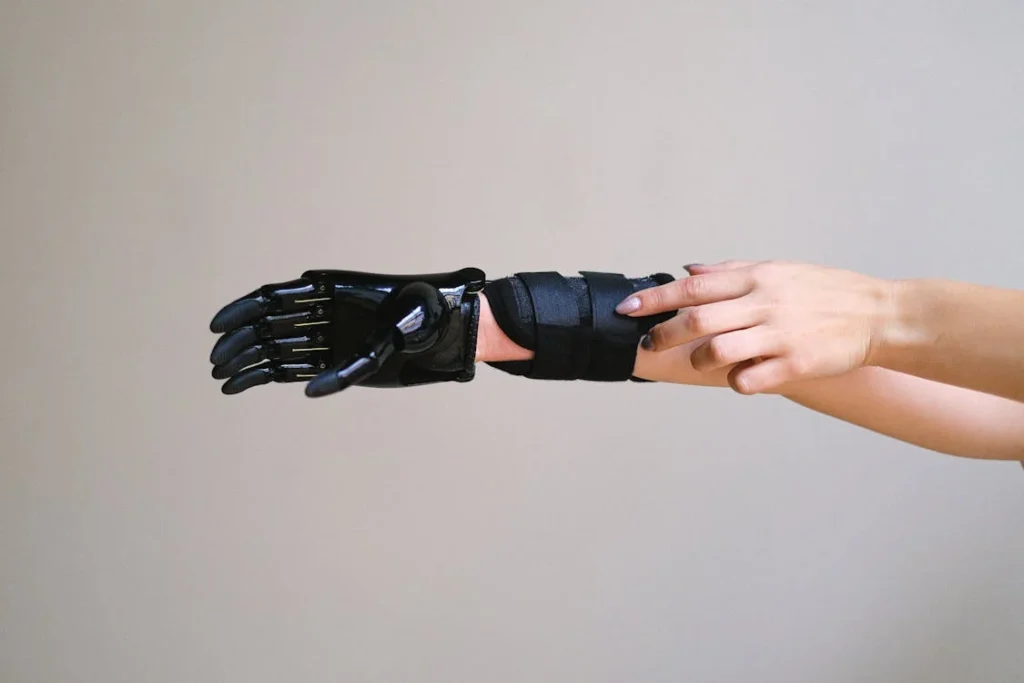
Understanding Growth in Pediatric Residual Limbs
When it comes to designing sockets for kids, growth is not just expected — it’s guaranteed. The biggest challenge isn’t just fitting a socket today, but ensuring it stays functional, safe, and comfortable as the child grows tomorrow, next week, and six months down the line.
Growth Isn’t Linear
Children don’t grow at a constant pace. One month they may show minimal change, and then suddenly, they shoot up in height. The same applies to the shape and volume of their residual limb.
Sometimes, it widens. Sometimes, the length increases. At times, the limb becomes more muscular due to increased physical activity or therapy.
This kind of unpredictable growth makes it nearly impossible to create a “one-size-fits-all” or long-term socket without some level of adjustment built in.
If ignored, it can lead to skin irritation, pressure sores, and a decline in mobility or willingness to wear the prosthesis.
Volume Fluctuations Are Common
Even within a short span of time, a child’s residual limb might swell or shrink. This can happen due to changes in temperature, activity level, or even hydration.
A socket that fits perfectly in the morning may become too tight by evening. This makes volume management a critical part of pediatric socket design.
That’s why socket designs must be flexible — not just in terms of material, but in how easily they can be adjusted, relined, or replaced.
The Psychological Side of Growth
Children are not just small adults. They think and feel differently. When their prosthesis no longer fits well, it doesn’t just cause physical pain. It creates frustration.
They may begin to avoid using the limb altogether. They might struggle to explain what’s wrong or why they feel uncomfortable. That’s why designing sockets for them isn’t just a technical job; it’s deeply human.
A child must feel that their prosthesis is a part of them — not a burden. If the socket becomes uncomfortable, they lose trust in it. And once that trust is lost, it takes time and effort to build it back.
Bone Growth and Epiphyseal Plates
The medical side of growth plays a big role too. In children, the ends of their long bones contain growth plates, known as epiphyseal plates.
These areas are responsible for bone lengthening. If a socket applies too much pressure here, it can affect bone development.
Worse, it might cause deformities or pain that impacts not just the residual limb but the whole skeletal structure over time.
So, sockets must avoid these growth-sensitive zones while still providing enough grip to ensure proper control. It’s a delicate balance.
Skin Sensitivity and Soft Tissue
Children’s skin is thinner and more sensitive than that of adults. This makes them more prone to pressure injuries, rashes, and blisters — especially during active play or sports.
The socket must distribute pressure evenly and reduce friction in areas that rub constantly. That’s where clever design and padding techniques come into play.
Plus, children may not always speak up when they feel discomfort. That’s why it’s critical for prosthetists and parents to watch for behavioral signs — like limping, taking off the prosthesis often, or refusing to wear it.
Adapting to Functional Needs
Growth affects more than just size — it changes how the child moves. A toddler learning to walk will need a different kind of socket support than a ten-year-old playing cricket or riding a bicycle.
As the child grows, they take on more activities, and the socket must adapt to support each new motion without limiting them.
Flexibility in design isn’t just about allowing growth — it’s about enabling a growing child to do more, try more, and enjoy life without feeling restricted by their prosthetic.
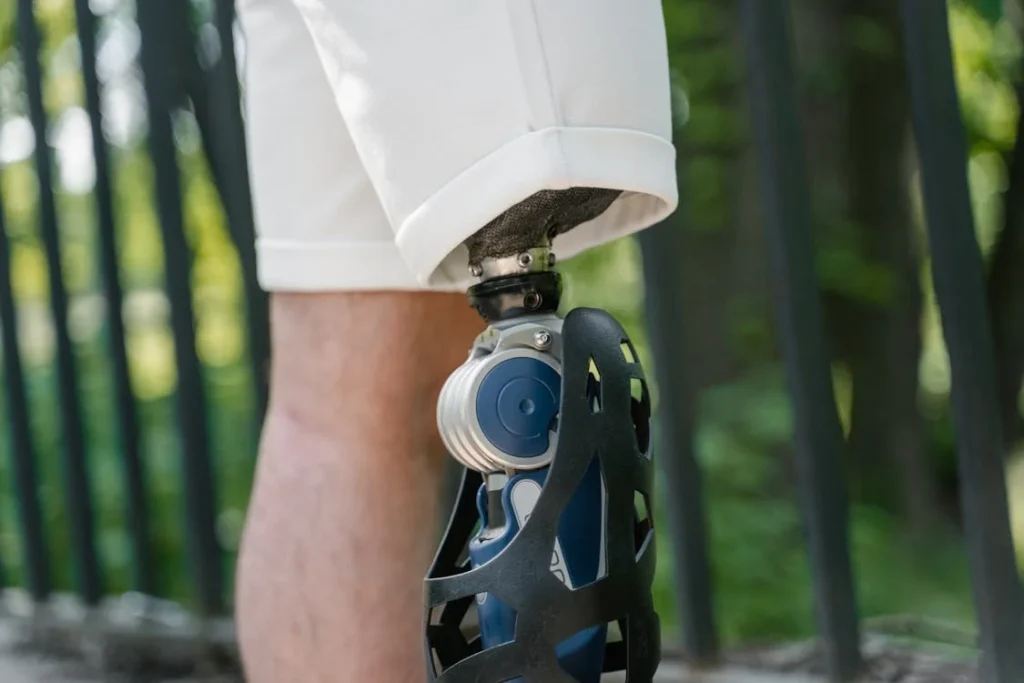
Principles of Pediatric Socket Design
Creating a prosthetic socket for a child is like designing a moving puzzle. Every piece needs to fit, flex, and shift over time.
Unlike adults, who might use the same socket for years, children often need changes every few months. So, the goal isn’t to make a socket that lasts forever — it’s to build one that evolves as they do.
Comfort Comes First
At Robobionics, we always say that if a child is not comfortable, they won’t wear the prosthesis — no matter how advanced it is.
Comfort is not just about soft materials. It’s about how the socket fits around the residual limb, how it moves with the body, and how much it lets the skin breathe.
The socket should hug the limb gently, without pinching. It should stay in place when the child is running, jumping, or crawling.
And it should never cause red marks or sore spots after removal. If it does, something needs to change.
Growth-Friendly Design
Since we know that kids grow quickly, sockets should include features that make adjustments easy.
Some modern designs use modular components, so certain parts of the socket can be replaced without changing the entire unit. Others use soft inner liners that can be swapped or adjusted as the limb changes shape.
A very useful approach is the use of adjustable sockets — these can be loosened or tightened using dials, straps, or velcro. Think of it like adjustable shoes. They grow a bit with the child before needing to be fully replaced.
Another method is to use expandable panels made from stretchable materials. These adapt to minor growth and limb volume changes, especially helpful for very young kids where daily changes can be noticed.
Light Weight Without Sacrificing Strength
Children don’t have the same muscle strength as adults, so the socket must be light. But light doesn’t mean weak. The materials used — often carbon composites, advanced plastics, or flexible thermoplastics — must be both durable and feather-light.
Weight becomes even more important when a child starts walking. A heavy socket throws off their balance and causes fatigue.
But a well-balanced, light socket lets them move naturally, which supports healthy bone development and walking patterns.
Easy to Don and Doff
Donning (putting on) and doffing (taking off) must be simple, especially for young children or those with less hand strength.
This isn’t just about independence — it’s about daily wearability. If it’s hard to get on, both the child and parent are likely to skip using it, especially during rushed mornings or school time.
Sockets that slide on smoothly, with intuitive fasteners, make life easier. Over time, this builds consistency in usage, which improves overall mobility.
Breathability and Skin Health
Children sweat more than adults, and with active play, that sweat can build up inside the socket. This can cause the skin to break down, itch, or even develop rashes. That’s why ventilation is a key part of design.
Some sockets now include built-in channels or breathable liners that wick away moisture. Others have open areas strategically placed where the limb needs more air.
Materials like medical-grade silicone or foam help reduce friction while letting the skin breathe.
This attention to detail keeps the child comfortable for longer periods and reduces the chances of skin infections or irritation.
Visual Appeal Matters Too
Let’s not forget one important aspect: how it looks. Kids care about appearance. They don’t want a prosthesis that makes them feel different or ashamed.
Many children actually enjoy picking colors, themes, or even cartoon characters for their socket covers. A cool-looking socket gives them a sense of pride.
We’ve seen children light up when their prosthesis matches their favorite superhero or comes in their favorite color.
It might seem like a small thing, but emotionally, it’s a big deal. It helps the child bond with their device and use it more confidently.
Family Involvement is Key
Every good pediatric socket design starts with listening — to the child and their parents. No one knows the child’s habits, quirks, and routines better than their caregivers.
By involving them early in the process, prosthetists can build a socket that truly fits into the child’s life.
We always recommend parents observe their kids during different activities — walking, sitting, playing — and note any discomfort or awkward movement.
That feedback is priceless. It allows the design team to tweak the socket for better alignment, cushioning, or flexibility.
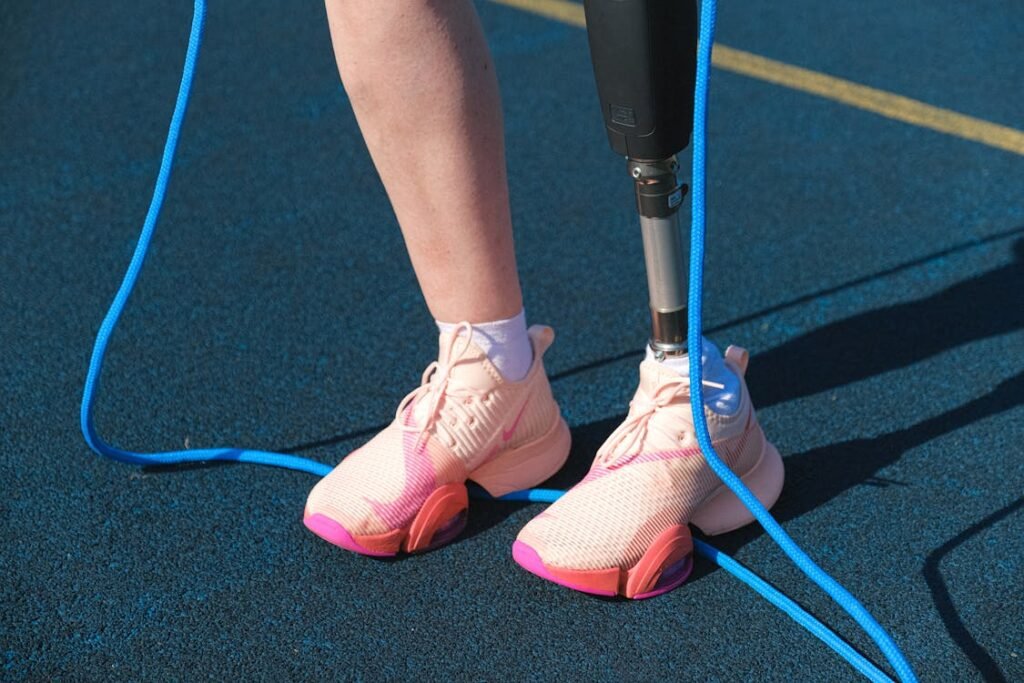
Materials and Technologies Shaping Pediatric Socket Design
The materials used in a pediatric socket are just as important as the design. They determine how the socket feels, how it responds to movement, how it handles heat and moisture, and how well it adapts to growth.
Over the years, innovation in prosthetics has introduced a wave of new materials and design techniques that have completely changed the way we approach pediatric sockets.
Flexible Thermoplastics: A Game Changer
One of the most widely used materials in pediatric sockets is flexible thermoplastic. It’s soft, moldable, and responds well to body heat.
This makes it ideal for growing limbs. It can be reshaped or heated for quick adjustments. That means as the child’s limb changes, the prosthetist doesn’t always have to build a whole new socket — they can modify the existing one.
These plastics also allow more movement, which is perfect for toddlers who crawl, climb, and roll around all day.
Carbon Fiber Composites for Strength and Lightness
For more active children, carbon fiber composite materials are used.
These are extremely strong, yet incredibly lightweight. The strength ensures the prosthesis holds up during sports or rough play, while the lightness reduces fatigue and promotes natural movement.
Carbon fiber sockets are often combined with flexible inner liners, offering both stability and comfort. This mix-and-match approach helps customize the socket for each child’s activity level and daily routine.
Silicone and Gel Liners for Comfort
Soft inner liners made of medical-grade silicone or gel provide a cushion between the residual limb and the hard socket.
These liners reduce pressure, absorb shock, and help with skin health. They’re especially useful for children with very sensitive skin or irregular limb shapes.
Some liners are even infused with antimicrobial properties, helping prevent rashes or infections. Others are breathable or designed to manage sweat, keeping the limb dry throughout the day.
3D Printing for Faster, Personalized Sockets
One of the most exciting innovations in prosthetics today is 3D printing. It allows for incredibly precise, custom socket designs based on scans of the child’s limb. These sockets can be made quickly, often in a matter of days, and offer a snug fit with fewer adjustments needed later.
3D printing also allows for creative designs — fun textures, colors, and even holes for breathability. Kids can feel like their prosthesis is something made just for them, which boosts emotional connection and self-esteem.
Even better, when the child grows out of it, the file can be adjusted digitally and a new one printed — faster and often at a lower cost than traditional fabrication.
Suspension Systems that Grow with the Child
A key part of any socket is how it stays on the limb — this is known as the suspension system. For children, it must be simple, secure, and not overly tight.
Modern systems use soft suction, pin locks, or even vacuum technology to hold the socket in place. Many of these systems now come with adjustability features, so they can be fine-tuned as the limb grows or changes in volume. This avoids the need for early replacement and keeps the child active without discomfort.
Smart Sensors and Wearable Tech
Though still emerging, some pediatric prosthetics now include sensors that track movement, pressure, and temperature inside the socket. These tools can alert parents or clinicians if the fit is off or if a pressure point is forming — even before the child says anything.
It’s like a smart sock for your prosthetic — it monitors comfort in real-time and helps avoid bigger issues down the line. This technology is still growing, but it holds huge promise for early detection and proactive care.
Custom Molding and CAD-CAM Tools
Gone are the days of only using plaster molds. Today, CAD-CAM (computer-aided design and manufacturing) allows sockets to be digitally designed and cut using robotic tools.
This speeds up the process and increases accuracy. The result? A better fit on the first try, less time in the clinic, and more time for the child to get back to life.
It also allows prosthetists to save each design digitally, making future updates and rebuilds much faster. If the child needs a new socket later, the base design is already there, ready to be tweaked.
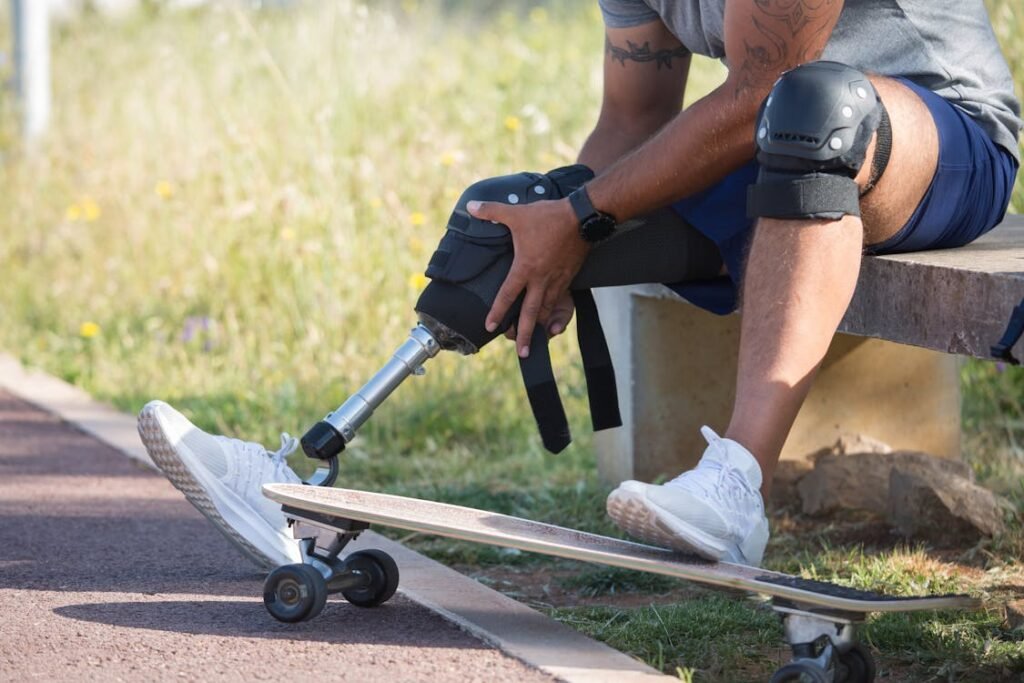
The Fitting Process and Ongoing Care
Fitting a child with a prosthetic socket is not a one-time task. It’s a journey — one that begins with detailed assessments and continues with regular check-ups, timely adjustments, and a close watch on the child’s comfort and movement.
A well-fitted socket today may not be the right fit six months from now, especially in the fast-changing world of a growing child.
The First Fit: More Than Just Measurements
The initial fitting session is incredibly important. It’s when prosthetists take detailed measurements, scans, and sometimes molds of the residual limb.
But this session is also about observation. How does the child move? Where does their limb bear pressure? What is their level of activity?
Prosthetists also talk to parents and, if possible, to the child — even very young ones. Understanding their lifestyle, preferences, and any past issues helps in designing a socket that fits not just the body, but the person.
Often, a test socket is made first. This is a transparent, temporary socket used to check pressure points and alignment before the final version is created. It’s like a rehearsal — and it’s critical for long-term comfort.
Break-In Period
No matter how well-designed a socket is, the body needs time to get used to it. This is called the break-in period.
During this time, the child may only wear the socket for a few hours a day, gradually increasing wear time as the limb adjusts.
It’s important to watch closely during this period. Any signs of redness that last longer than 30 minutes after removal, or any unusual behaviors (like the child avoiding certain movements), are red flags. Catching and correcting issues early makes a huge difference.
Monitoring Growth and Fit
Children should have regular prosthetic reviews, often every 3 to 6 months. These visits are not just for checking fit — they’re also opportunities to assess growth, limb development, gait changes, and overall prosthesis use.
At Robobionics, we encourage parents to keep a simple diary — noting any times the child refuses to wear the limb, complains of pain, or behaves differently during play. These small clues can point to bigger fitting problems that need quick attention.
Prosthetists will often check:
- Has the residual limb grown longer or changed shape?
- Is the socket causing pressure on growth plates?
- Has the liner worn out or become too tight?
- Is the suspension still holding securely?
If the answer to any of these is “yes,” adjustments are made right away. Sometimes this means adding padding, reshaping part of the socket, or switching out a liner. Other times, it means rebuilding the socket entirely.
Home Care Routine
Parents play a huge role in the success of any pediatric prosthetic socket. Teaching them simple daily care routines can extend the life of the socket and keep the child comfortable.
This includes:
- Cleaning the socket daily with mild soap and water to prevent skin infections.
- Checking the limb every evening for signs of redness, blisters, or cuts.
- Ensuring the liner or suspension sleeve is intact and not stretched out.
- Keeping the prosthesis dry and stored in a clean, cool place.
Children should also be taught — in simple ways — how to recognize when something doesn’t feel right. They should feel safe telling an adult or taking the socket off if needed.
When to Replace a Socket
One of the most common questions we hear is: “How often will my child need a new socket?”
The truth is, it varies. Some children may need a new socket every 6 to 12 months, depending on their growth rate and activity level. Others may get more time. Here are a few signs it might be time for a new socket:
- The child’s limb no longer fits snugly, even with thicker socks or liners.
- The socket shifts or rotates during movement.
- The child shows skin irritation or complains of pain.
- There’s visible damage, cracks, or wear in the socket material.
- The prosthetist recommends a new fit based on updated measurements.
It’s important not to delay replacement. An ill-fitting socket can do more harm than good, leading to injuries or even reluctance to use the prosthesis at all.
Emotional Support During Transitions
Replacing a socket can feel like a big change to a child. They’ve just gotten used to one — and now it’s gone. Some kids adjust quickly, others may resist the change. That’s why emotional support is just as important as technical support.
Let the child help choose the look of the new socket. Celebrate the “upgrade” with them. Frame it not as a loss, but as a new adventure. This keeps their relationship with their prosthesis positive, which is key to long-term success.
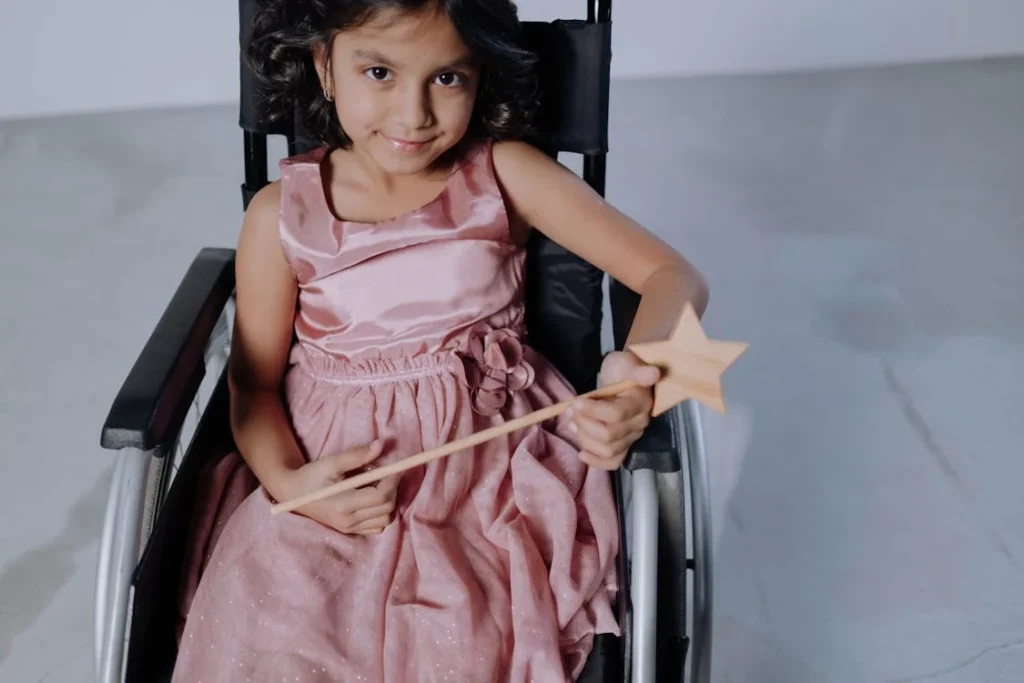
Challenges in Pediatric Socket Design and Practical Solutions
Rapid and Unpredictable Growth Patterns
One of the toughest challenges in pediatric socket design is the speed at which children grow. Unlike adults, children can experience major changes in limb size and shape in a matter of weeks.
This makes it very hard to maintain a good fit over time. A socket that fits perfectly in March might become tight, loose, or misaligned by June.
To manage this, prosthetists must design with foresight. Materials that are easy to reshape and modify become vital.
At Robobionics, we often leave extra room in the initial design, not to make it loose, but to allow space for controlled expansion. Close monitoring and scheduled follow-ups give us the chance to intervene before discomfort or damage occurs.
Another solution lies in modular socket systems. These sockets are made in parts that can be replaced individually without rebuilding the entire prosthesis. This saves time, reduces cost, and minimizes disruption to the child’s routine.
Communication Barriers with Younger Children
Young children may not always be able to express when something feels off. They might cry, refuse to wear the limb, or start limping — but these signs can be subtle.
Because they don’t always have the words to explain, the burden falls on parents and clinicians to observe carefully.
The key here is creating a safe, open environment where the child feels encouraged to express feelings, even non-verbally.
During fittings or reviews, letting the child play or move naturally can reveal a lot. Watching their gait, their posture, or even their facial expressions during different activities often gives clearer clues than direct questions.
Building trust also helps. When children visit the same clinician regularly and develop a friendly bond, they become more likely to speak up when something feels wrong.
Balancing Stability and Flexibility
Designing a socket for a growing child involves a delicate balance between keeping it tight enough for stability and loose enough to accommodate changes.
If the socket is too tight, it risks damaging soft tissue or affecting bone growth. If it’s too loose, it reduces control and can lead to falls or incorrect limb usage.
Achieving this balance starts with understanding each child’s activity level. A child who plays sports will need a different kind of support than one who’s just learning to walk.
The socket design must be matched to their current phase — not their age — and allow room to adjust as that phase evolves.
In some cases, soft inner liners can act as a buffer. They provide grip without applying too much direct pressure, making small volume changes easier to accommodate.
Managing Costs for Families
Another major challenge is cost. Pediatric prosthetics need frequent updates, which can put a financial strain on families.
Each new socket, liner, and adjustment adds to the burden. For some, insurance only partially covers these expenses, and others may have no coverage at all.
To reduce this pressure, clinics and prosthetic centers like Robobionics are exploring cost-efficient materials, faster fabrication techniques like 3D printing, and socket designs that grow with the child.
In some cases, having an adaptable base socket with replaceable liners or sleeves helps extend the life of the device without needing full replacement.
There’s also a need for policy changes. Advocating for better insurance coverage for pediatric prosthetic care is essential. Until that happens, innovation must continue to lower the cost barrier without sacrificing quality.
Dealing with Wear and Tear
Kids are active. They run, jump, fall, and climb. And their prosthetic sockets need to keep up. Wear and tear is not just likely — it’s inevitable.
Over time, even the most durable materials will show signs of stress, especially around joints and edges.
Frequent inspection is the only real solution. Parents and caregivers should be encouraged to check the socket daily, even briefly, to spot any cracks, rough patches, or loose components.
Clinics should offer rapid repair services that minimize downtime, so the child isn’t left without their limb for long.
We also advise against over-restricting activity. Children should not be told to avoid running or sports just to protect the prosthesis.
Instead, the prosthesis should be designed to support those very activities. Movement is part of healthy growth, and the right socket should enable, not restrict, that growth.
Emotional Transitions and Body Image
As children grow older, their awareness of how they look also increases. Around school age, they may become more self-conscious about their limb difference.
If the socket is bulky, noisy, or looks different from what they see around them, it can affect self-esteem.
This is where personalization matters. Giving children choices in how their socket looks — from color to graphics — makes a real difference.
It gives them control and pride in their prosthesis. Some kids want bright colors, while others prefer a design that blends in. Either way, their voice must lead the aesthetic decision.
Beyond looks, emotional support is vital. Children should have access to peer support groups, role models, and honest conversations that help them feel normal — not different.
A well-designed socket plays a subtle but powerful role in this by fitting so well that the child doesn’t think about it unless they want to.
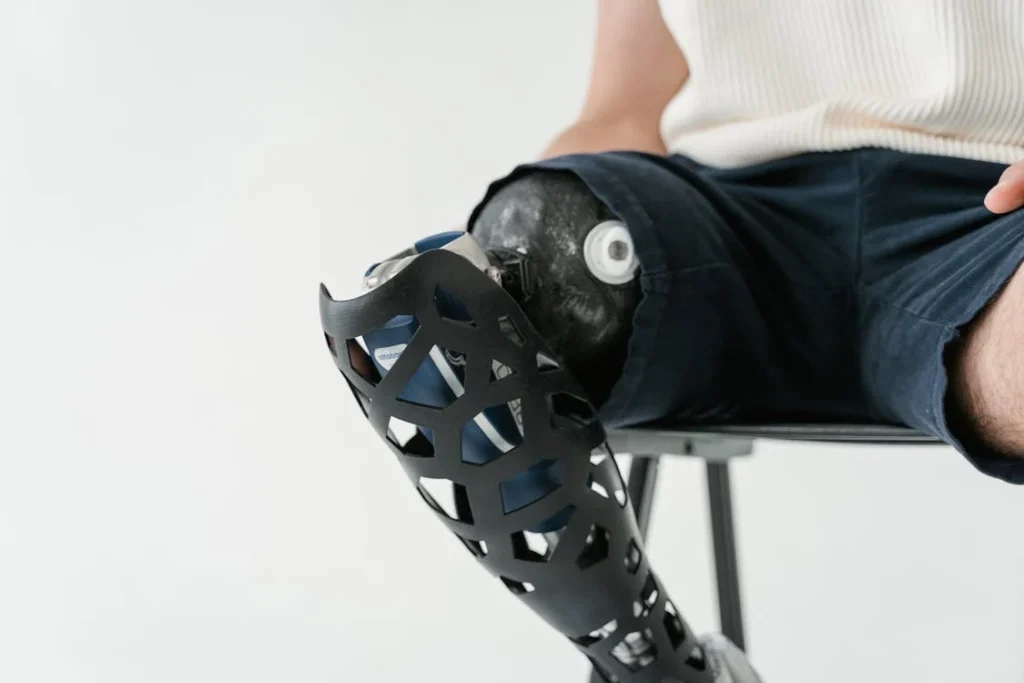
The Future of Pediatric Socket Design
A Shift Toward Personalization at Scale
As technology continues to advance, pediatric socket design is moving into an era of hyper-personalization. Gone are the days when sockets were shaped solely by hand using plaster molds and manual adjustments.
Today, digital tools make it possible to create socket designs that match the exact anatomy of a child’s residual limb — not just once, but as often as needed.
We’re entering a world where each socket is not only personalized but also replicable. This means clinicians can save digital records of past sockets, compare growth trends, and recreate or upgrade sockets with pinpoint precision.
For families, it means faster fittings and fewer long clinic visits. For children, it means a better fit, fewer problems, and more time just being a kid.
This shift will also make it easier to adjust sockets between visits. Some systems are being developed to allow for remote assessment — using photos, limb scans, or even smartphone apps to track changes over time and help prosthetists decide when a visit is needed.
The Rise of Smart Prosthetic Sockets
While smart prosthetic limbs have received much of the spotlight, the socket — the connection point between the human and the machine — is starting to get its own high-tech upgrades.
Imagine a socket that can sense pressure points and send alerts before they become a problem. Or one that tracks temperature to identify early signs of skin irritation. This is no longer science fiction.
Research labs and some advanced clinics are now testing sockets with embedded sensors that monitor real-time limb conditions.
These sensors can identify even small shifts in pressure or fit, allowing early intervention. For parents and clinicians, this means less guesswork. For children, it means fewer painful experiences and a better relationship with their prosthetic.
Some of these smart systems may even integrate with smartphones, sending easy-to-understand notifications or offering guidance on when to tighten a strap, change a liner, or schedule a clinic appointment.
Sustainable Materials for an Eco-Friendly Future
Sustainability is another big area of focus. With children needing frequent socket replacements, the environmental cost can add up.
As a response, manufacturers are now exploring eco-friendly materials that are biodegradable, recyclable, or made from renewable sources.
These materials must still meet high standards for strength, safety, and comfort. But innovations in plant-based plastics, bamboo composites, and low-emission production methods are making it possible to deliver both performance and responsibility.
At Robobionics, we’re actively investing in material science that supports both children and the planet.
In the near future, we expect sockets that are not only good for the child but also kind to the world they’re growing into.
Faster Turnaround Times with Automation
Another major development is the use of automation in manufacturing. With computer-aided design and 3D printing becoming faster and more accessible, sockets can now be created in a fraction of the time it used to take. This is a major breakthrough for pediatric care, where speed is critical.
Quick turnaround doesn’t mean rushing through care. It means better responsiveness to growth changes. A child who has outgrown their socket can have a new one within days instead of weeks.
This reduces downtime, avoids injury, and keeps the child moving, playing, and learning without unnecessary breaks.
Automation also improves consistency. With digital files and machine-guided tools, every socket can be made to the same high standard — something that’s harder to guarantee with only manual processes.
Integrating AI for Predictive Fit
Artificial Intelligence is finding its place in pediatric prosthetics as well. AI tools can now analyze a child’s growth data over time, recognize patterns, and help predict when a socket might become too small or when a new one might be needed.
By combining data from past fittings, limb measurements, and activity tracking, AI can assist prosthetists in making more informed decisions.
It won’t replace human expertise, but it can enhance it — offering alerts, optimizing material choice, and even suggesting design changes based on predicted growth curves.
This kind of proactive care could drastically reduce the number of emergency visits caused by discomfort or poor fit and shift pediatric prosthetics toward more preventive, holistic care models.
Cross-Disciplinary Collaboration
The future of pediatric socket design will also be shaped by collaboration. No single discipline holds all the answers.
Prosthetists, engineers, therapists, pediatricians, designers, and even child psychologists are beginning to work together more closely.
Each brings a unique perspective — from biomechanics to mental health — to help design sockets that are not just functional, but joyful to wear.
This integration leads to smarter design decisions, better emotional outcomes, and sockets that fit seamlessly into every part of a child’s life.
It also empowers families. When professionals across disciplines communicate and collaborate, parents receive more consistent guidance, fewer conflicting instructions, and a more complete care experience for their child.
Conclusion
Pediatric socket design is more than a technical craft — it’s a responsibility. A child’s prosthetic socket must do more than fit; it must adapt, support, and grow with them. It should offer comfort in motion, freedom in play, and dignity in every moment. As we continue to innovate with better materials, smarter technologies, and more personalized care, the goal remains simple: to help children live fully, without limits.
At Robobionics, we believe every socket tells a story — not just of engineering, but of resilience, adaptation, and joy. With each fitting, each adjustment, and each smile from a child who feels “just like everyone else,” we’re reminded why this work matters. The future of pediatric prosthetics is bright — and growing stronger with every step.



